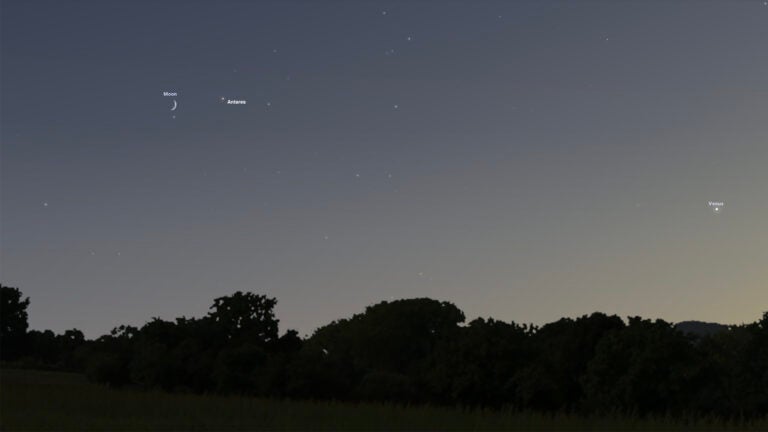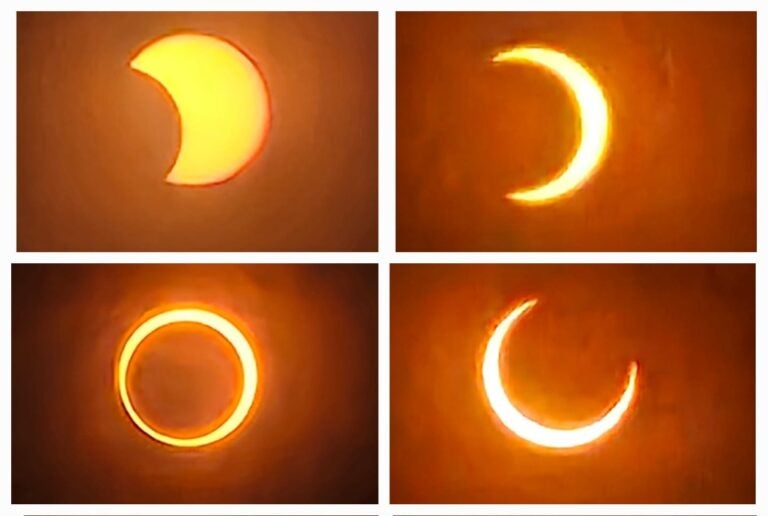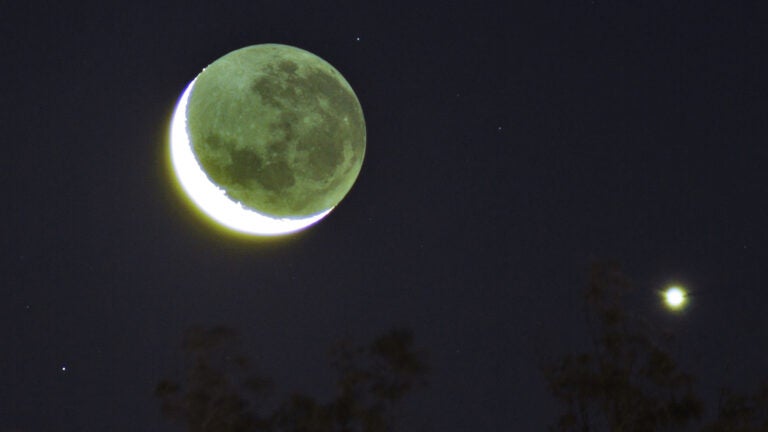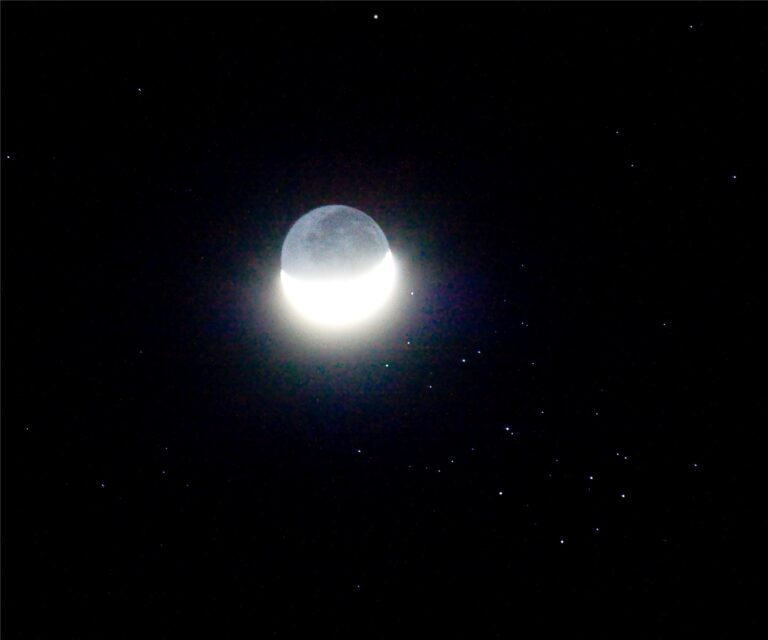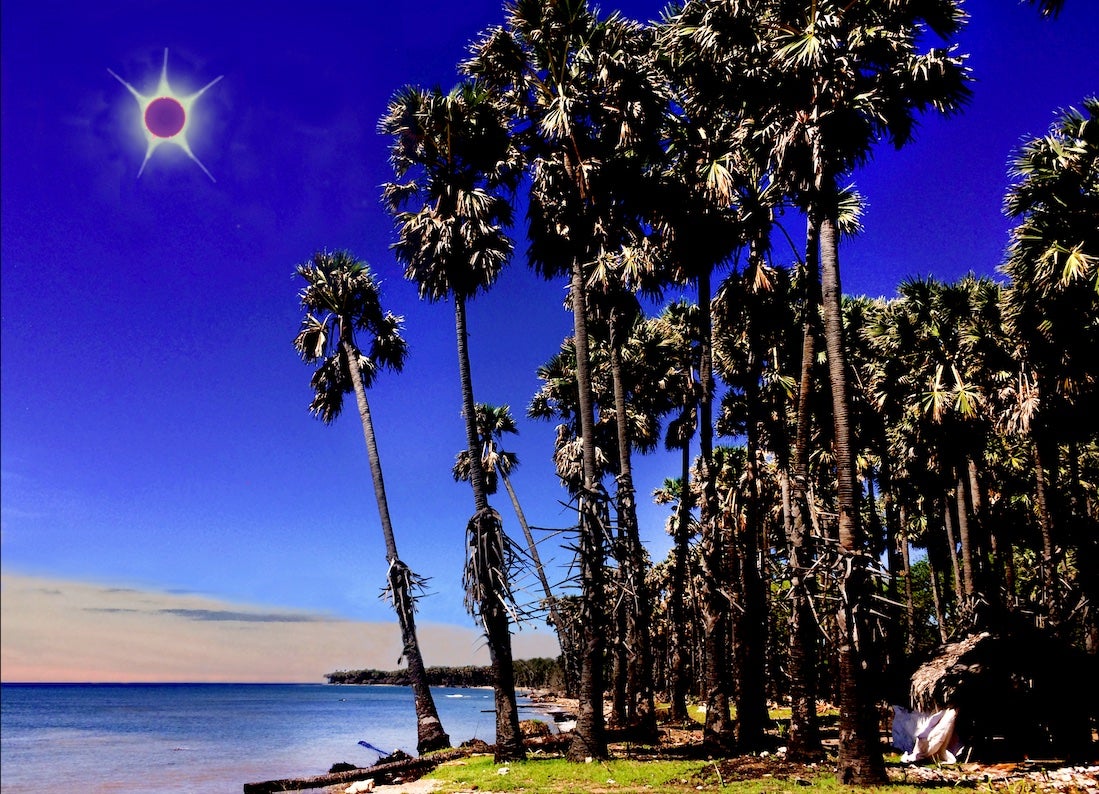
Like fingerprints, no two hybrid solar eclipses are the same. Many share general features, such as the solar corona, prominences, chromosphere, and more. But how these phenomena will appear to the naked eye during any given eclipse is anyone’s guess. The hybrid solar eclipse of April 20, 2023, was a stunning reminder of just how visually surprising an eclipse can be.
My wife and I observed totality near Com, East Timor, close to the point of maximum eclipse (a total of 76 seconds). During past eclipses, I could perceive changes in the ambient light when the Sun was approaching 50 percent eclipsed. However, as this eclipse reached 75 percent totality and the quality of light turned ashen, I still couldn’t perceive these changes. I wondered if this had to do with the Sun’s altitude (70°).
The temperature was roughly 90 degrees Fahrenheit (32 degrees Celsius) and began dropping during the partial phases. The strong winds we had at the start of the eclipse stopped completely; although I have felt breezes diminish during past events, the abrupt quenching of these strong gusts felt preternatural.
A remarkable event occurred a full two minutes before totality, when extremely high-contrast shadow bands — thin, wavy lines caused by Earth’s turbulent atmosphere refracting sunlight immediately before and after a total solar eclipse — rippled across the terrain from the southwest (214° azimuth) to the northeast (30°) at a steady pace. The bands were about a foot apart and intense enough to show on a video made with an ancient iPhone 5s. Equally peculiar, the bands appeared most prominently when seen against the sandy, rocky terrain.
A total surprise
While the initial diamond ring phenomenon was prolonged, few if any Baily’s beads stood out prominently in the seconds before totality. During this time, the Moon’s disk shone forth with a distinct shade of purple. This rich color was seen against a pale seafoam green inner corona. Never at any other eclipse had I seen these colors so noticeably and comfortably with the unaided eye.
Then, just as the Moon slammed the door on the last crescent of sunlight, five brilliant coronal streamers, sharp and white, shot out radially from pale petals beyond the plum Moon in a starfishlike fashion. An irregular crescent of chromosphere (the layer of the Sun just above the visible surface) hugged the Moon’s limb, which also revealed several naked-eye prominences (giant loops of plasma arcing off the Sun’s surface). The largest coronal streamer burned pink, adding to the already stunning array of color.
As totality progressed, the Moon darkened, but not to the usual inky black. Additionally, the equatorial “butterfly wings” that are typically formed by coronal streamers (as they tend to flow most freely from the Sun’s equator) did not appear. The only other corona appeared as a breath of diffused light extending perhaps one solar radius from the disk. During totality, the sky did not completely darken. It remained a pale blue, akin to that at the start of nautical twilight. At third contact, with the appearance of the second diamond ring, intense shadow bands returned, lasting another two minutes. The last topsy-turvy event occurred several minutes after totality, when some cows that had been lingering unaffected before and during totality suddenly herded and left for home in single file.
On reflection, I believe the color and glamour of the visual details were due to the fact that the contrast between the corona (about the brightness of a Full Moon) and the sky was low. The difference was similar to seeing the Full Moon in the dark night sky versus in the twilight, when the eye does not suffer ill effects from glare.
These observations may be worth keeping in mind as we approach the April 8, 2024, total solar eclipse. It will be interesting to compare the brief nature of this hybrid event to a total solar eclipse lasting several minutes. As always, send your thoughts and observations to sjomeara31@gmail.com.




